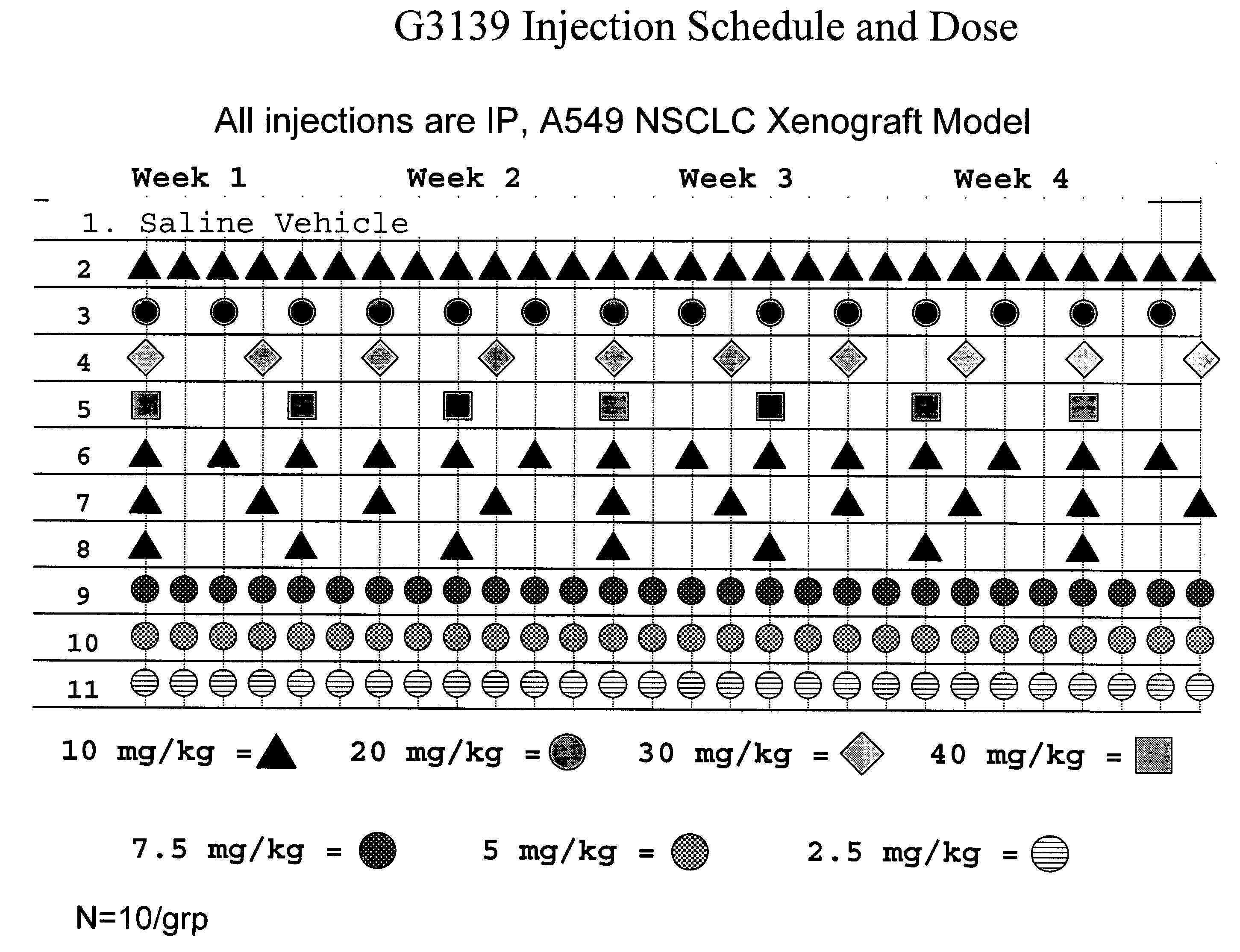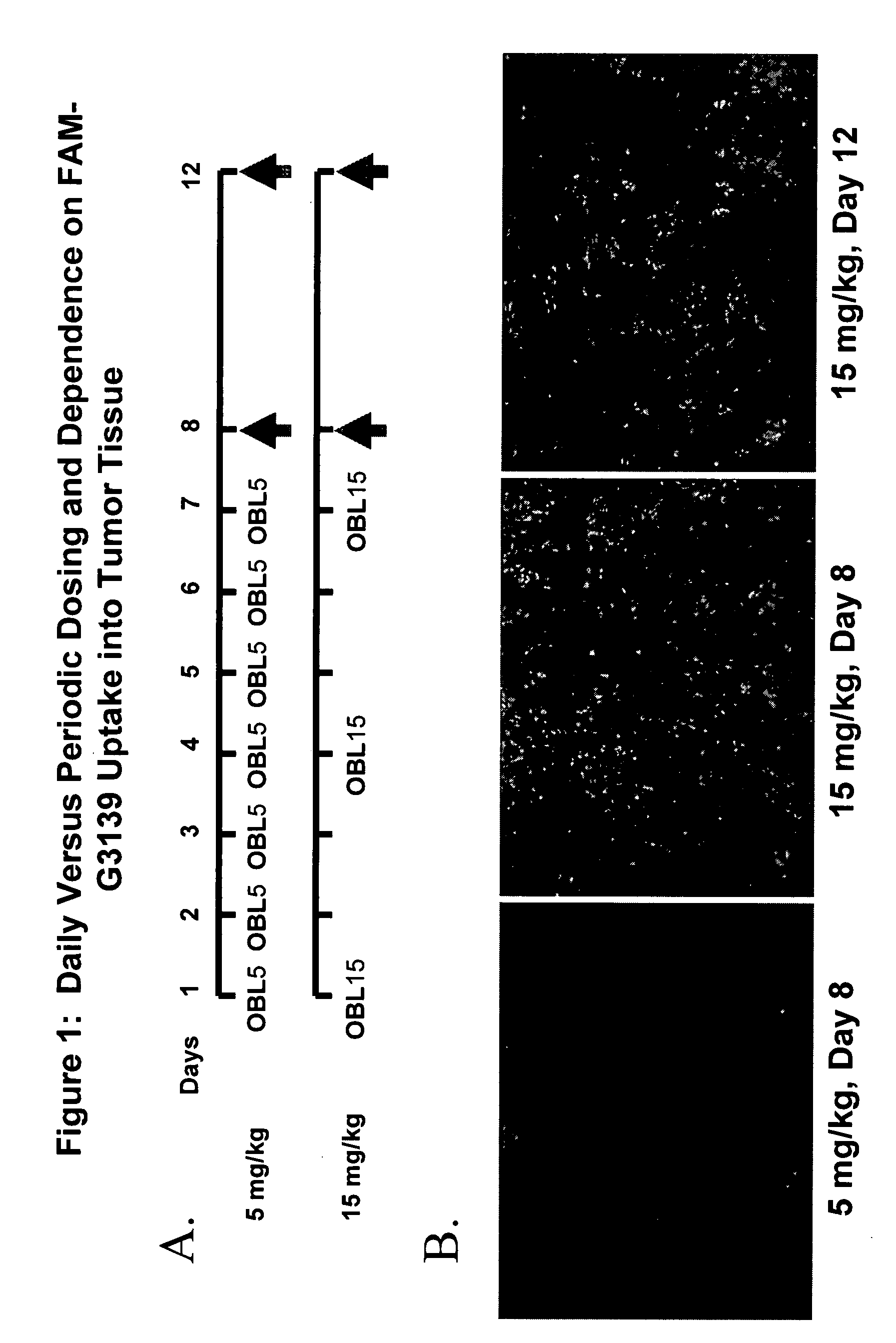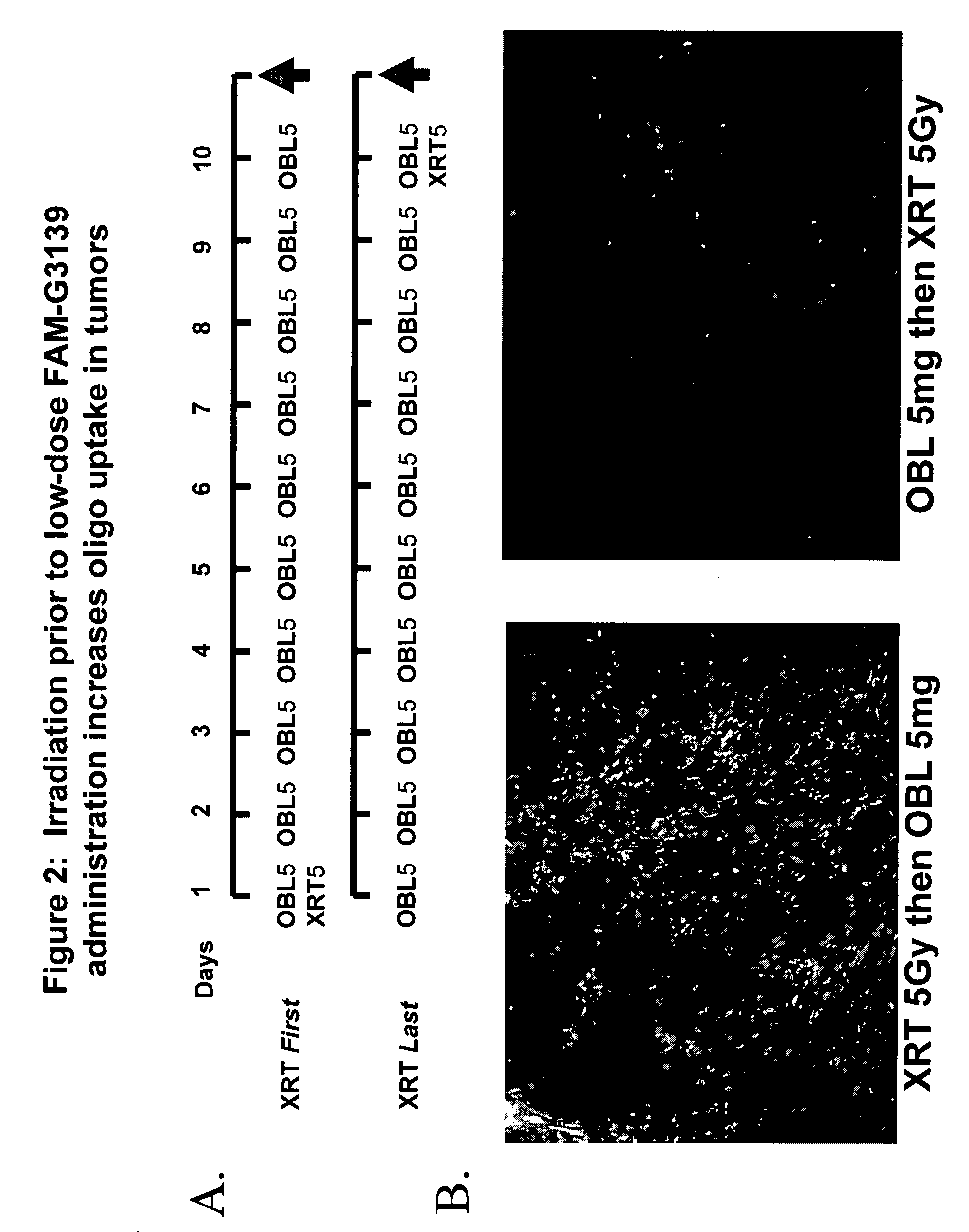Dosing and scheduling of oligomers
a technology of oligomers and oligomers, applied in the field of oligomer dosing and scheduling, can solve the problems of affecting the specificity of previous approaches to the treatment of cancer proliferative disorders including cancer, and affecting the expression of both
- Summary
- Abstract
- Description
- Claims
- Application Information
AI Technical Summary
Benefits of technology
Problems solved by technology
Method used
Image
Examples
example 1
Higher Uptake of Fluorescent-Labeled Oligonucleotide, G3139 in Xenograft Tumor-Bearing Mice Treated Intermittently With High Dose Oligonucleotide
[0097] In vivo tumor model: PC-3-Bcl-2 xenograft tumors were established by injecting 1×106 cells in 1 mg / mL MatrigelTM into the flanks of male athymic nude mice. When the average tumor size was 65 mm3, animals were randomized and treated via IP with fluoresceinate Bcl-2 antisense oligonucleotide (FAM-G3139) at a dose of 5 mg / kg daily for 7 days (low dose), or at a dose of 15 mg / kg (high dose) given intermittently on days 1, 4 and 7, i.e. at a 3-day interval between dosing. (FIG. 1A).
[0098] Uptake offluoresceinated G3139 oligonucleotide. On days 8 and 12, animals were sacrificed and subcutaneous and organs were resected. A portion of each resected tissue was either (a) embedded in OCT (Miles Laboratories) or (b) placed in cryotubes and snap-frozen (liquid N2) for cryosectioning (8-10 μM thickness), mounted on Superfrost-plus slides, (Fish...
example 2
Pre-Pre-Treatment With X-ray Irradiation Enhanced Uptake of Fluorescent-Labeled Oligonucleotide, G3139 in Xenograft Tumor-Bearing Mice Treated Intermittently With High Dose Oligonucleotide
[0100] In vivo tumor model: PC-3-Bcl-2 xenograft tumors were established in the flanks of male athymic nude mice as described in Example 1 above. When the average tumor size was 65 mm3, animals were randomized and mice were either pre-treated with 5 Gy X-ray prior to administration of FAM-G3139 oligonucleotide by IP at a low dose of 5 mg / kg, daily for 7 days or at a high dose of 15 mg / kg on given intermittently on days 1, 4 and 7, or treated with X-ray on the last day after completing administration of G3139. (FIG. 2A).
[0101] Uptake offluoresceinated G3139 oligonucleotide. On day 11, animals were sacrificed and subcutaneous and organs were resected. The resected tissues were processed as in Example 1 described above and fluorescence intensity was recorded using a stereomicroscope (Zeiss, 40) and ...
example 3
Pre-Pre-Treatment With X-ray Irradiation Prolonged Retention of Fluorescent-Labeled Oligonucleotide; G3139 in Xenograft Tumor-Bearing Mice Treated a Single Dose of G3139.
[0104] In vivo tumor model: PC-3-Bcl-2 xenograft tumors were established in the flanks of male athymic nude mice as described in Example 1 above. When the average tumor size was 65 mm3, animals were randomized and the right flank of the xenograft tumor bearing mice were pre-treated with 5 Gy X-ray prior to administration of fluoresceinated G3139 oligonucleotide intravenously at a low dose of 6 mg / kg, daily for 5 days (top left panel); at a high dose of 10 mg / kg on given intermittently on days 1, 3, and 5 (top middle panel); a single dose of 30 mg / kg on the same day of X-ray pre-treatment (top right panel); and non-treated left flank bearing xenograft tumor (bottom 3 panels). Each mouse received a total dose of 30 mg / kg fluorescent G3139.
[0105] Uptake offluoresceinated G3139 oligonucleotide. On day 8, animals were ...
PUM
| Property | Measurement | Unit |
|---|---|---|
| Time | aaaaa | aaaaa |
| Time | aaaaa | aaaaa |
| Time | aaaaa | aaaaa |
Abstract
Description
Claims
Application Information
 Login to View More
Login to View More - R&D
- Intellectual Property
- Life Sciences
- Materials
- Tech Scout
- Unparalleled Data Quality
- Higher Quality Content
- 60% Fewer Hallucinations
Browse by: Latest US Patents, China's latest patents, Technical Efficacy Thesaurus, Application Domain, Technology Topic, Popular Technical Reports.
© 2025 PatSnap. All rights reserved.Legal|Privacy policy|Modern Slavery Act Transparency Statement|Sitemap|About US| Contact US: help@patsnap.com



